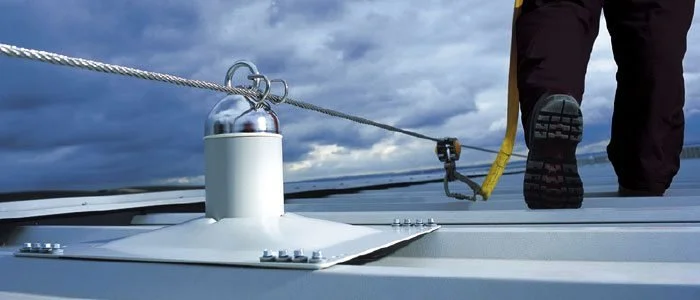Mansafe Testing Explained: Understanding Mansafe Testing
You and your colleagues might easily overlook testing a mansafe system that has been reliable since installation. However, it is crucial to actively conduct mansafe testing when working at height to ensure the system is fit for purpose.
For those involved in working at height, knowledge of with mansafe systems is essential. Mansafe systems, consist of stainless steel wire rope, posts, and fixings and provide a safe method for accessing and working in high-risk areas. They come in various configurations such as horizontal, vertical, and overhead systems and are designed to prevent injury when falling.
Should a fall occur, mansafe systems are engineered to limit the fall distance and impact. And with the correct fall protection personal protective equipment (PPE), the systems will prevent the user from falling to the ground.
Mansafe System Testing
What is the Importance of Regular Mansafe Testing?
Working at height carries inherent risks, so a reliable safety line, cable, or track system should be used. Paired with appropriate PPE, these systems serve as a crucial lifeline for individuals working at elevated levels. To ensure they continue to function effectively and safeguard your staff, regular compliance testing is important.
How often should we perform Mansafe Testing?
Industry standards require a compliance check at least once every 12 months. However, our testing division at Altus Safety recommends conducting these tests every 6 months for optimal safety. This proactive measure helps in early detection of potential issues, maintaining the ongoing reliability of your fall protection systems.
How does the weather affect Mansafe Testing?
Environmental factors significantly influence the stability of cable systems. For instance, heavy snowfall can slacken cables, undermining the system's safety. Regular visual inspections are vital to identify wear and tear resulting from weather conditions. Also, plant growth near the height safe system can restrict user mobility, so the need for consistent roof maintenance is paramount to ensure safety while working at height.
What are the consequences of Neglecting Mansafe Testing?
Ignoring the need for regular testing and maintenance of safety standards can endanger the welfare of your workforce and expose you to legal risks. In the event of an accident, it is crucial that your Safety Line systems comply with regulatory standards, such as BS EN 795:2012.
Altus Safety Mansafe Testing Compliance: Ensuring Your Safety
With extensive expertise, Altus Safety’s Testing Service offers essential services to ensure your Safety Line systems are fit for purpose and compliant. Our thorough testing procedures confirm that your systems meet the highest safety benchmarks, providing you peace of mind that your facility is secure for height-related activities.
What to Look for During Mansafe Testing?
1. Free Movement: Check for smooth operation of traveling devices within the system.
2. Swages: Ensure the correct number of swages are used for optimal functionality.
3. Cable Tension: Maintain appropriate tension in the cables to enhance effectiveness.
4. Fractured Cable: Look for any signs of cable damage or fractures that might compromise safety.
5. Fixings: Examine for any missing or loose fixings on both the roof and system components.
6. Energy Absorbers: Check that energy absorbers are functional to mitigate forces during falls.
7. Visual Inspection: Identify any visible damage or vandalism that could affect the system’s integrity.
8. Compliance Tags: Verify that compliance tags are up to date, confirming adherence to safety standards.
Comprehensive Mansafe Compliance Testing by Altus Safety
During mansafe system testing, it is crucial to also review the associated PPE for compliance and proper usage. This ensures a thorough safety assessment, encompassing both the structural and personal aspects of fall protection.
Contact Altus Safety to speak to a qualified member of our testing and safety team and make sure you are testing your height safety equipment correctly.
Read more blogs on How do you Test a Mansafe System and The Significance of Mansafe Systems When Working from Height.

